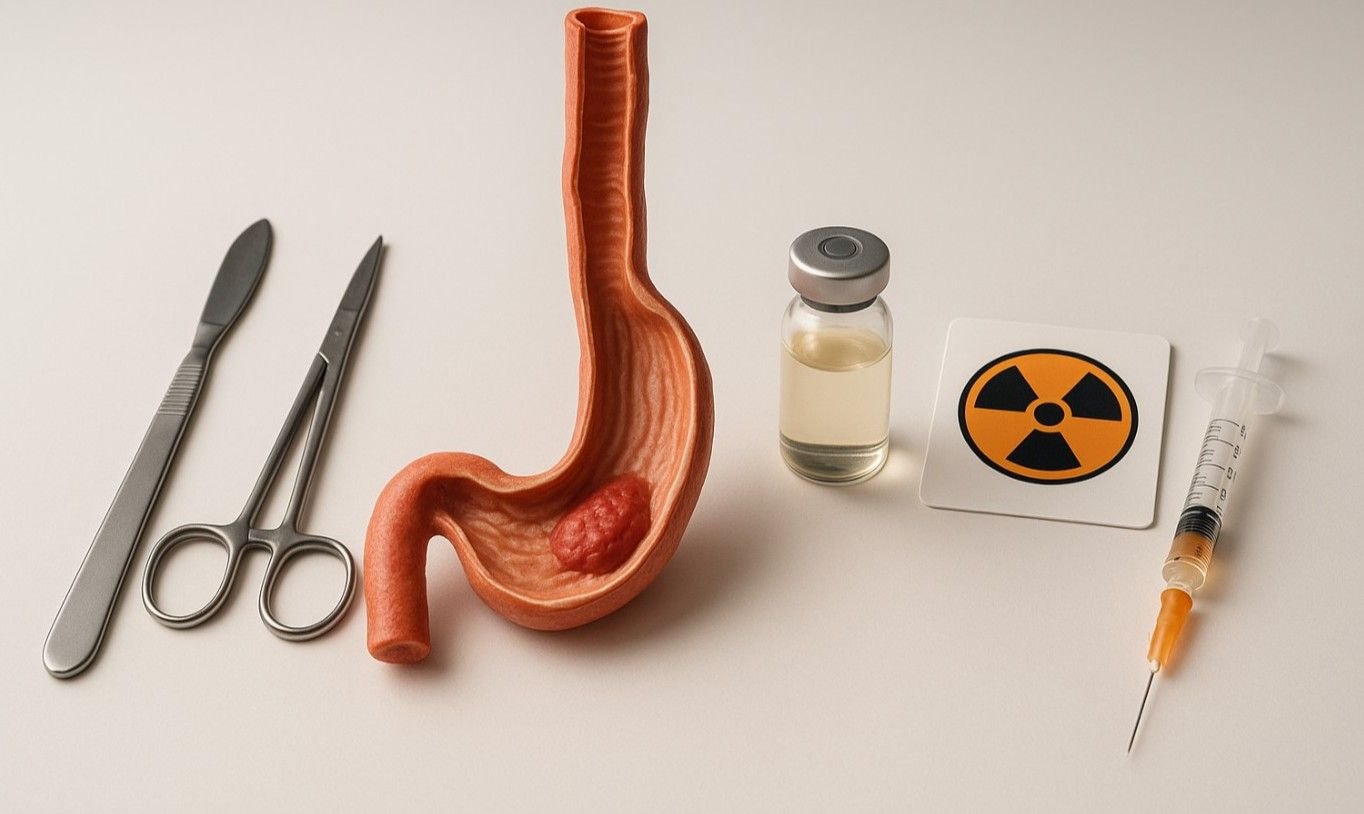

Esophageal cancer treatment combines surgery, chemotherapy, radiation, and immunotherapy. The goal is to extract the tumor and prevent recurrence. Early stages often demand Minimally Invasive Esophagectomy (MIE) or robotic surgery, while advanced stages use Immunotherapy (like Keytruda or Opdivo) to boost the body's defenses.
Receiving a diagnosis of esophageal cancer (cancer of the food pipe) feels like the ground has shifted beneath your feet. At Chest Surgery India, we see patients every day who are holding a pathology report in one hand and a long list of confusing questions in the other.
Here is the truth: The landscape of Cancer Treatment for the esophagus has changed dramatically in the last 24 months. It is no longer just about "major open surgery." It is about precision. From robotic arms that operate through tiny incisions to "smart drugs" that hunt cancer cells based on their genetic makeup, you have options today that did not exist five years ago.
This guide cuts through the medical jargon. We are going to walk you through exactly what happens after a diagnosis, the newest treatments available in India for 2025, and how to choose the right path for you or your loved one.
Before we talk about cutting or chemotherapy, we have to talk about staging. We cannot treat what we cannot measure.
Dr. Parveen Yadav often explains to patients that esophageal cancer comes in two primary "flavors" that behave differently:
Treatment is dictated by the "TNM" system (Tumor, Nodes, Metastasis).
Pro Tip: If you haven't had a PET-CT scan and an EUS (Endoscopic Ultrasound), your staging is incomplete. EUS is critical to seeing how deep the tumor has grown into the wall.
For many patients, surgery is the best chance for a cure. But this isn't the surgery of the 1990s. At Chest Surgery India, we specialize in Minimally Invasive Esophagectomy (MIE) and Robotic Thoracic Surgery.
Historically, removing the esophagus (Esophagectomy) required large incisions in the chest and abdomen. Recovery was slow.
Today, using VATS (Video-Assisted Thoracoscopic Surgery) or Robotic assistance:
Why Experience Counts:
The esophagus runs near the heart, lungs, and aorta. It is high-stakes real estate. Dr. Parveen Yadav has performed over 1,000 esophageal cancer surgeries and 5,700+ thoracic procedures. High-volume centers like ours consistently show lower complication rates than general hospitals.
A decade ago, we operated first. Today, for Stage II and III cancers, we often use Neoadjuvant Therapy (treatment before surgery).
This is where the excitement is in oncology right now. Immunotherapy trains your body's white blood cells to recognize and eat cancer cells.
Cancer cells wear a "mask" (proteins like PD-L1) to hide from the immune system. Drugs like Pembrolizumab (Keytruda), Nivolumab (Opdivo), and the recently approved Tislelizumab rip that mask off.
Fresh Data Note: In late 2024, the FDA approved Zolbetuximab (Vyloy) for tumors with a specific protein called CLDN18.2. This is a new targeted therapy option we are now seeing enter the Indian market.
It can be confusing to weigh these options. Here is a simple breakdown of how they compare in the Indian context.
| Feature | Surgery (MIE / Robotic) | Chemotherapy | Immunotherapy | Radiation Therapy |
| Primary Goal | Cure by removing the tumour | Systemic control (kills cancer cells throughout the body) | Strengthens the immune system to target cancer cells | Local control (shrinks tumour, stops bleeding) |
| Hospital Stay | 5–8 days (minimally invasive) | Daycare (3–6 hours per cycle) | Daycare (1–2 hours per cycle) | Outpatient (15 minutes daily for 5 weeks) |
| Key Side Effect | Temporary swallowing difficulty | Nausea, hair loss, fatigue | Rash, thyroid issues, fatigue | Skin burn, esophagitis (painful swallowing) |
| Approx. Cost (India) | ₹2.5L – ₹5L (depends on room and technology) | ₹75k – ₹1.5L per cycle | ₹1.5L – ₹4L per dose (generic vs branded) | ₹60k – ₹2.5L (IMRT / IGRT) |
We cannot talk about esophageal cancer without talking about food. The tumor blocks the pipe, causing weight loss right when you need strength.
Dietary Modifications:
Internal Link Suggestion: Check out our detailed guide on "Post-Esophagectomy Diet Plans for Indian Patients" (Content Cluster Idea).
There is a growing debate in medical circles called "Organ Preservation." Some data suggests that if Chemo+Radiation kills the tumor completely (a Complete Clinical Response), you might skip surgery.
Here is the Chest Surgery India perspective:
While appealing, "watching" is dangerous. Cancer can hide in the deeper layers of the esophageal wall where scopes cannot see. Studies show that up to 30-40% of patients who looked "cured" on scans still had cancer cells found during surgery.
Unless you are medically unfit for operation, surgery remains the best insurance policy against recurrence. Do not gamble with "invisible" cancer.
We believe in transparency. Cancer treatment is expensive, but India remains one of the most cost-effective destinations globally for this care.
There is no single "best" treatment. There is only the best treatment for you.
At Chest Surgery India, Dr. Parveen Yadav and our team focus on a "Tumor Board" approach. We don't just decide alone; we sit with medical oncologists and radiation specialists to design a custom plan for your specific scan results.
Learn how advanced robotic surgery treats thymoma and esophageal cancer with greater precision, minimal invasion and improved recovery beyond lung-focused care.
Get a transparent breakdown of the true cost of robotic lung surgery in India in 2026, including treatment, technology, hospital fees, and recovery expenses.
Discover why international patients prefer India for lung cancer treatment, with affordable costs, high-quality care, advanced technology and shorter wait times.
Copyright 2023 © Dr .Parveen Yadav all rights reserved.
Proudly Scaled by Public Media Solution!